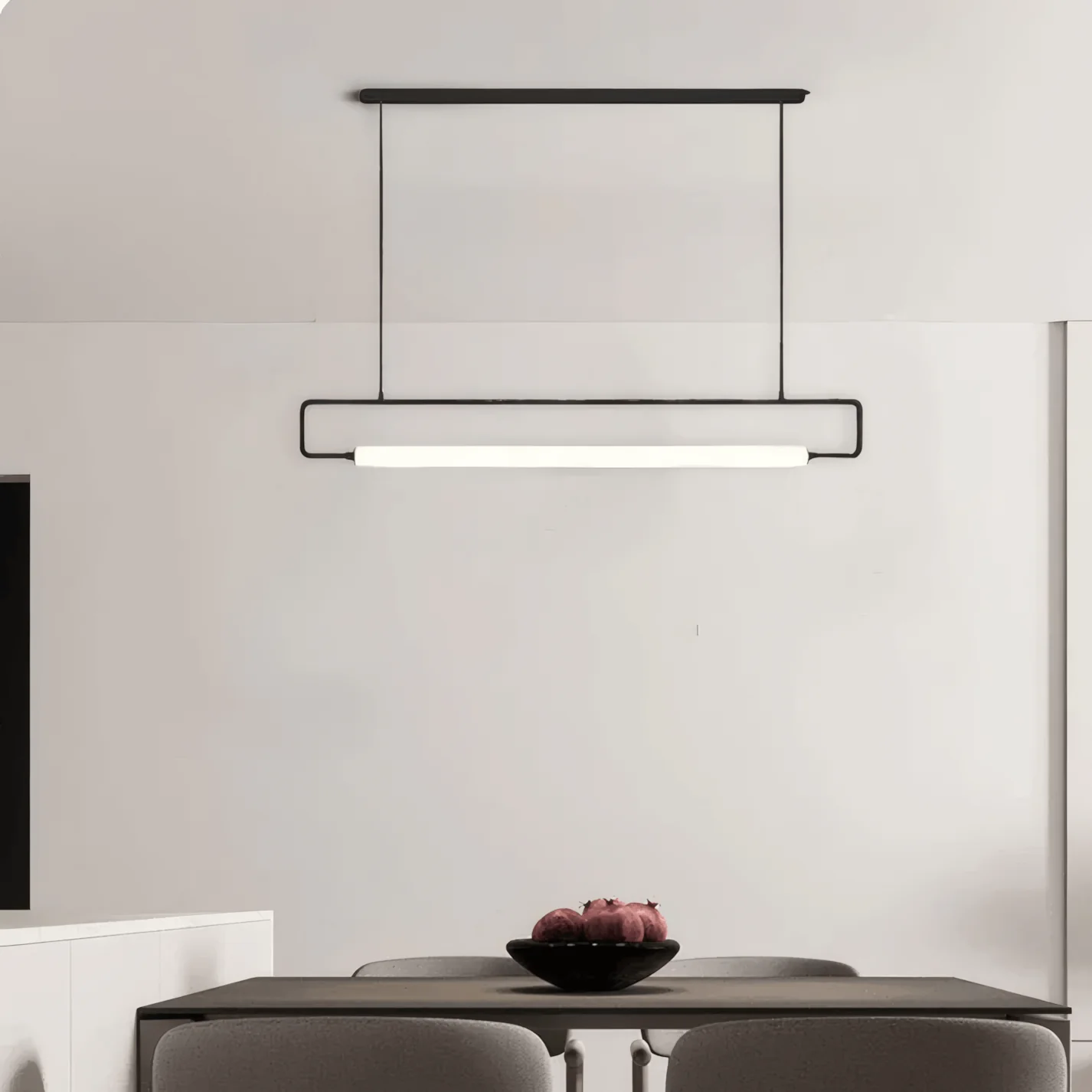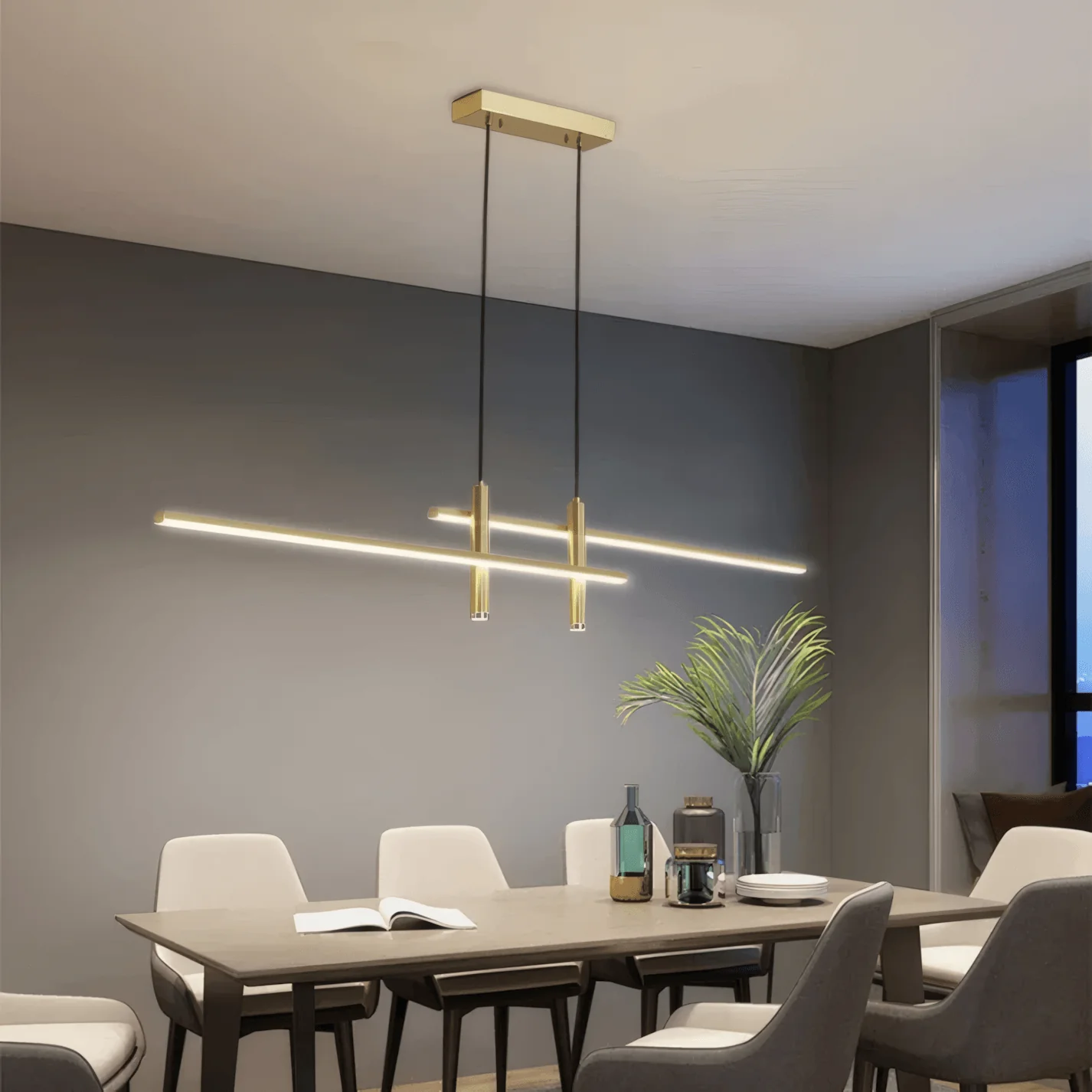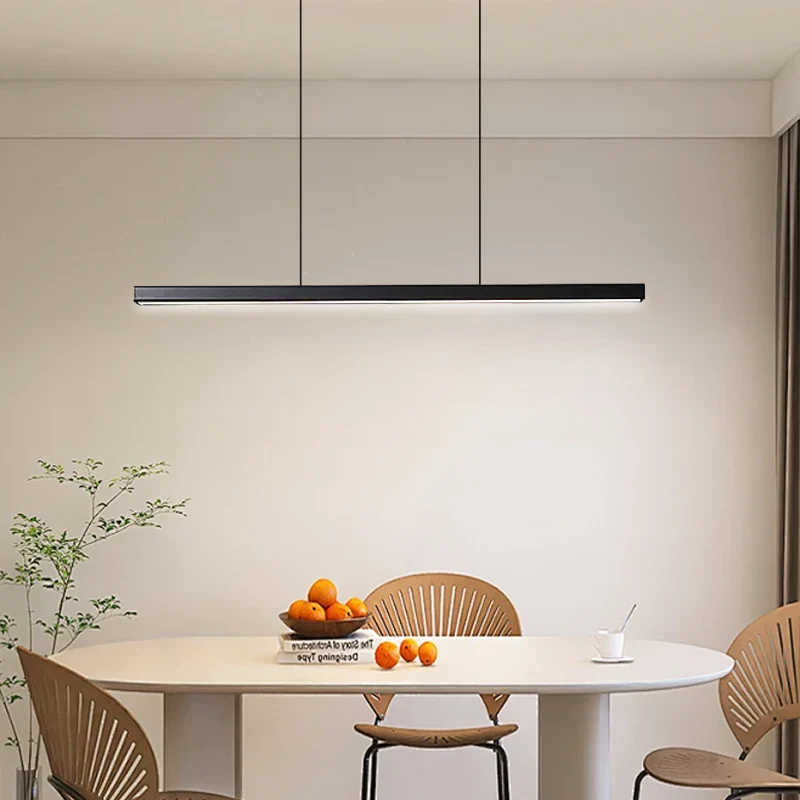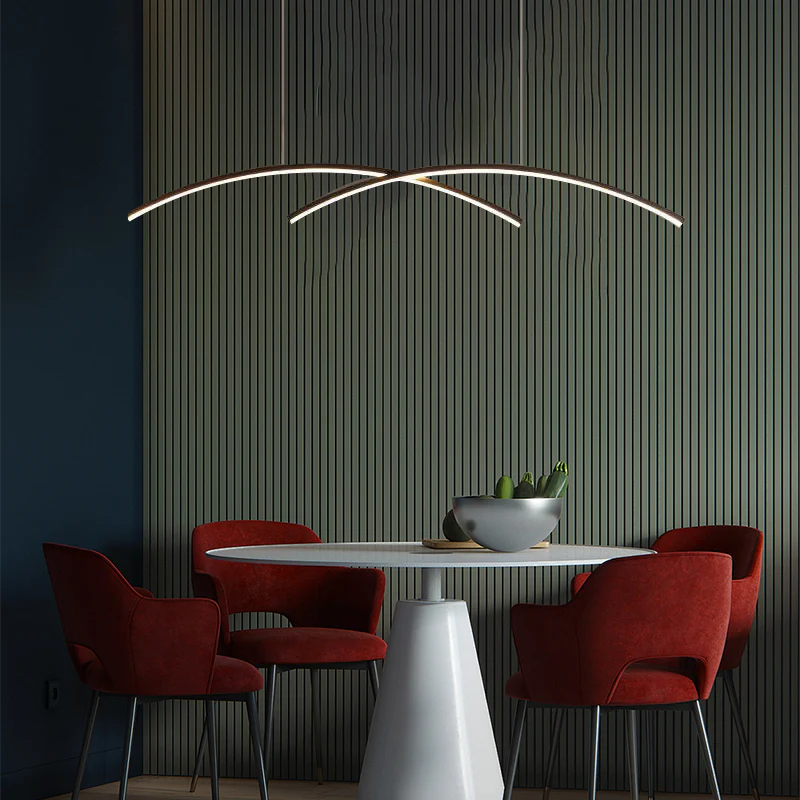Top Tips for Choosing Minimalist Pendant Lights for Your Dining Room

Choosing the right minimalist pendant light can transform your dining room. Pendant lights do more than merely illuminate the space; they set the mood and enhance the room's aesthetic. Whether you're hosting guests or enjoying a meal with family, lighting plays a crucial role. It creates a warm and inviting atmosphere, making the space feel welcoming. The best minimalist pendant lights not only look stylish but are also highly functional. A well-chosen light fixture establishes the perfect ambiance, ensuring every meal feels special.
Key Takeaways
Pick pendant lights that match your dining table size. A good tip is to choose a light half or two-thirds the table's length.
Use both soft and bright lighting for a cosy feel. Soft lighting adds warmth, while bright lighting highlights the table area.
Think about how high your pendant lights should hang. Place them 76-91 cm above the table for good light and clear sight.
Choose materials like metal or plastic for strength and easy cleaning. These materials make the lights look nice and last longer.
Add dimmers for adjustable lighting. Dimmers let you change brightness to suit any mood or event.
Understanding the Purpose of Pendant Lighting
Ambiance vs Task Lighting
Pendant lights have two main uses: setting mood and helping tasks. Mood lighting spreads light evenly, making rooms cosy and welcoming. In dining rooms, it creates a warm feel for meals or gatherings.
Task lighting is brighter and focuses on specific spots. It lights up areas like your dining table for detailed activities. This is great for reading, working, or other precise tasks.
Here’s a simple way to think about it:
Mood lighting spreads softly across the room.
Task lighting shines brightly on certain areas.
Using both types together gives balanced lighting for all needs.
Lighting for Dining and Other Activities
Pendant lights make dining spaces flexible for different uses. They set the right mood for parties or quiet dinners. Features like dimmers and height controls let you adjust the light easily.
They also make dining areas more useful. Bright light over the table helps with eating or other tasks. Smart placement and design can make the space look special.
Here’s a table showing how pendant lights work in various rooms:
Room Setting |
Main Use |
Design Effect |
|---|---|---|
Bright light for work areas like islands. |
Good height placement allows easy chatting across spaces. |
|
Bathroom |
Soft light near mirrors, better than overhead lights. |
Adjustable height gives perfect light at eye level, improving the room’s look. |
Acts as decor, adding beauty to the room. |
Big fixtures stand out, making the space stylish and unique. |
|
Creates a cosy feel with adjustable brightness for any mood. |
Dimmers allow both bright and soft light for a better dining experience. |
Pendant lights are not just useful; they also add style and charm to your dining room.
Design Tips for Dining Table Pendant Lights

Picking the Right Size
Choose a pendant light size that fits your table. It should not look too big or too small. A good rule is to pick one that is half to two-thirds the table's length. For example, if your table is 180 centimetres long, a light between 90 and 120 centimetres works well.
The height is also important. Hang the light 70 to 85 centimetres above the table. This gives even light and keeps views clear. For wide tables, use more than one pendant. Space them 60 to 80 centimetres apart for balanced lighting.
Shapes and Styles for a Simple Look
Minimalist pendant lights have simple shapes and clean designs. Long tables look great with rectangular or bar-shaped lights. Round tables match well with circular or dome-shaped pendants.
You can pick different styles to suit your taste. Single pendants are simple and neat. Clusters or chandeliers add a fancy touch. These lights not only brighten the room but also become a stylish centrepiece.

Minimalist style
Materials and Finishes
The material of your pendant light affects how it looks and lasts. Metal and glass are strong and stay nice over time. Avoid materials like electroplated layers, as they may wear out.
For finishes, black and white are timeless choices. They match most rooms and add a classy feel. Acrylic shades are also a good option. They spread light evenly, making the room warm and cosy.
Tip: Pick materials and finishes that match your dining room's style. Make sure the light is easy to clean and works well.Technical Aspects of Choosing Pendant Lights

Best Height for Hanging Over Dining Tables
The height of pendant lights affects how they work and look. For dining tables, hang them 76-91 cm above the table. This height keeps the light soft and non-distracting. If your ceiling is taller than 9 feet, add 7.5 cm for every extra foot.
Here’s a simple table for guidance:
Ceiling Height |
Height Above Table |
|---|---|
8 to 9 feet |
76 to 91 cm |
Each extra foot |
Add 7.5 cm |
Follow these tips to make your dining area cosy and well-lit.
How Many Pendants for Different Table Shapes
The shape of your table decides the number of pendants. For round tables, one strong pendant works well. It lights the space evenly and looks neat. For long or oval tables, use multiple pendants. This spreads light across the whole table.
Here’s a quick guide:
Table Shape |
Suggested Lighting |
|---|---|
Round |
One strong pendant |
Rectangular/Oval |
Multiple pendants |
Picking the right number of lights makes the room both useful and attractive.
Spacing and Placement for Even Lighting
Spacing and placement are key for good lighting. Keep pendants 61-76 cm apart, measured from their centres. For long tables or islands, use three or more pendants. Space them equally and keep the same distance from the table edges.
Here are some easy tips:
Leave at least 61 cm between pendants.
Aim for 76-81 cm spacing for balance.
Keep equal gaps from the table’s ends for a tidy look.
These steps help you create a bright, stylish, and functional dining space.
Practical Tips for Minimalist Pendant Light Selection

Picking the Right Bulb Type
Choosing the right bulb is important for good lighting. Different bulbs use different amounts of energy and give off varying brightness. Brightness is measured in lumens per watt. Higher lumens per watt mean better energy savings. This helps lower electricity bills and is better for the environment.
Here’s a simple table comparing bulb types:
Bulb Type |
Lumens per Watt |
|---|---|
Incandescent |
10-17 |
Halogen |
15-25 |
CFL |
40-70 |
LED |
70-140+ |
LED bulbs are the best choice for saving energy. They are bright, use less power, and last longer. This means fewer replacements and more savings.
Tip: Use LED bulbs for brighter light and lower energy costs.
Adding Dimmers for Flexible Lighting
Dimmers are great for changing the light’s brightness. You can make the room cosy for dinner or brighter for family time.
Dimmable LED bulbs work well with dimmer switches. They let you control how bright the light is. This makes the room more useful and saves energy by using less light when not needed.
Tip: Combine dimmable bulbs with dimmer switches for flexible lighting.
Keeping Pendant Lights Clean
Cleaning your pendant lights keeps them looking nice and working well. Dust and dirt can make them less bright over time.
Follow these easy cleaning steps:
Turn off the light before cleaning.
Wipe dust with a soft cloth or duster.
For glass or acrylic shades, use a damp cloth with mild soap.
Check for loose parts or damage to keep them safe.
Regular cleaning keeps your lights shiny and lasting longer. Minimalist designs are simple to clean, making them perfect for busy homes.
Tip: Clean your pendant lights often to keep them stylish and bright.
Pendant Lighting for Kitchen Islands
Differences Between Kitchen and Dining Room Lighting
Pendant lights have different uses in kitchens and dining rooms. In dining rooms, they hang 30-36 inches above tables. This height makes the space cosy and great for chatting. In kitchens, pendant lights focus on tasks. They are placed 28-34 inches above countertops. This gives enough light for cooking and keeps the area open.
Think about how you’ll use the lights in each space. Dining room lights are for mood, while kitchen lights are for work. Knowing this difference helps you pick the right ones.
Placement and Spacing for Kitchen Islands
Good placement and spacing make kitchen island lighting work well. Follow these tips for balanced light:
Guideline |
Measurement/Recommendation |
|---|---|
Distance between lights |
|
Height above countertop |
30 to 32 inches |
Distance from edge of island |
12 inches from the end of island |
Minimum distance from pendant to edge |
6 inches |
Centring lights |
Centre over the island |
Placement for two pendants |
24 to 30 inches apart |
Placement for three pendants |
Divide island into four sections and hang in three inner sections |
These tips help your lights look good and work well. Proper spacing avoids clutter and keeps the design neat.
Matching Pendant Lights Across Spaces
Matching pendant lights in your home creates a unified look. Use layers of light to set the mood and improve function. Combine ambient, accent, and task lighting for the best effect.
When choosing lights, think about your room’s style and size. Big lights can overpower small spaces, while tiny ones may not stand out.
To connect spaces, mix similar light designs. For example, use minimalist pendant lights in both your kitchen and dining room. This links the areas while keeping their unique purposes.
Tip: Use layered lighting to create zones and improve your home’s style.
Picking the right minimalist pendant light needs thought about design and use. Think about your ceiling height, the light's purpose, and the fixture's size. These choices help the light fit your dining room and work well.
Look for lights that match your space and style. Whether you want something bold or simple, the right light can change your dining area. For more help, ask an expert or visit a shop to view lights.
Tip: Choose a pendant light that matches your decor and sets a cosy mood.
FAQ
What is the best material for minimalist pendant lights?
Metal and acrylic are great options. Metal is strong and looks modern. Acrylic spreads light softly, making the room feel cosy. Both are easy to clean and suit simple designs.
Tip: Pick materials that match your dining room's look and are easy to clean.
How do I choose the right size pendant light for my dining table?
Choose a light that is half or two-thirds your table's length. This keeps the look balanced. For example, a 180 cm table works well with a 90-120 cm light.
Note: Avoid lights that are too big for the space.
Can I use dimmers with LED pendant lights?
Yes, many LED pendant lights work with dimmers. Dimmers let you change the brightness for different moods. Use dimmable LED bulbs and matching switches for the best results.
How high should I hang pendant lights above the dining table?
Hang pendant lights 76-91 cm above the table. This gives good light without blocking views. For ceilings over 9 feet, add 7.5 cm for each extra foot.
Are minimalist pendant lights suitable for traditional interiors?
Yes, minimalist pendant lights can fit well in traditional rooms. Their simple shapes and neutral colours match many styles. Black or white finishes give a classic and timeless look.
Tip: Combine minimalist lights with traditional furniture for a balanced style.

